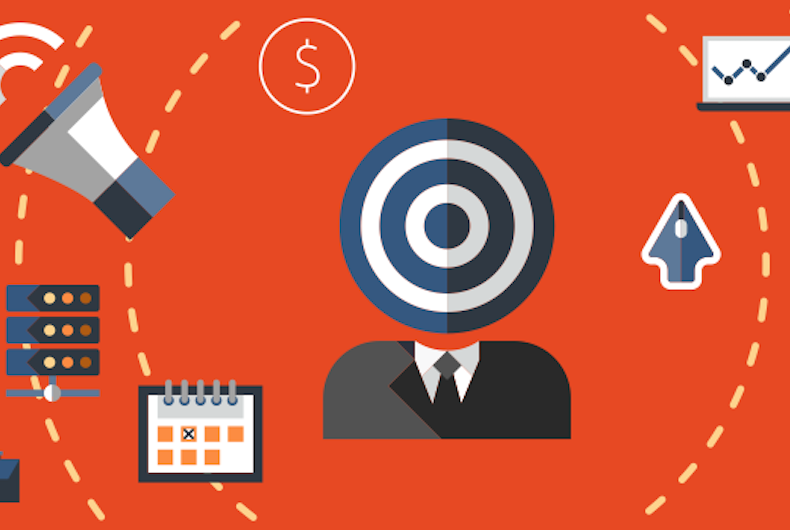 This is a great time to be an ecommerce company in the UAE, as more people are online now than ever. According to Euromonitor, ecommerce equated to just 1.5 percent of the overall retail industry spend in the UAE during 2016, a figure which could rise to 4.1 percent by 2021. This means that ecommerce is going to see a lot of growth and innovation in the years to come and more players are going to arrive in the market as marketers and retailers find better ways to target their customers. But it’s also a challenging time, given the greater competition, hence it is essential to retarget in a nuanced style.
This is a great time to be an ecommerce company in the UAE, as more people are online now than ever. According to Euromonitor, ecommerce equated to just 1.5 percent of the overall retail industry spend in the UAE during 2016, a figure which could rise to 4.1 percent by 2021. This means that ecommerce is going to see a lot of growth and innovation in the years to come and more players are going to arrive in the market as marketers and retailers find better ways to target their customers. But it’s also a challenging time, given the greater competition, hence it is essential to retarget in a nuanced style.
Let’s face the truth: in the time when almost all of ecommerce players use retargeting as a way to multiply their revenue, the smarter your approach is, the better. In this highly competitive environment, marketers have turned out their focus on performance-based activities, but no longer think about just one tech provider. In fact, more pros know that running two to three campaigns with use of both ‘standard’ and ‘professional’ retargeting solutions may bring much better overall results.
However, with a large number of retargeting engines out there, a very basic question marketers can still ask is: “is using many retargeters good for my business?” or “will I see any difference?” Let’s see what the most popular myths are surrounding multiple retargeting approaches, in hopes of encouraging knowledge about what the technology can and can’t do.
MYTH #1 Using The Same Ad Spaces Supply Will Lead to Worse Results
FACT #1: The More The Better
Different multiple retargeting tools bring better results when they operate on separate ad inventories, no doubts. For example, targeting inventories on Facebook versus other websites will likely bring positive results. But, there is still a lot of confusion multiple retargeters working effectively within the same ad space, or if they even work at all.
In some situations, a single provider will help to succeed, but in most cases multiple retargeters will be simply holistically more effective and could bring advertisers better results. Bear in mind however, that each tech provider is different, so the results delivered by them are not the same. In a typical scenario, each provider will win in some cases and lose in others – what means that each of them will generate less displays overall. However, in such a situation the total return from an advertiser’s point of view will be higher and each display more effective.
MYTH #2 Equal Technology Means Equal Results
FACT #2 There Is No Equal Technology
There is a common misunderstanding that because all retargeting providers in general use comparable technology, the only thing they can offer is mirroring the same activities.
In fact, when we say every retargeting tool is ‘different’, it means that they may use completely different algorithms, user segmentation, unique creative’s, etc. All that means different results from each retargeter. One tool may be better in reaching a certain group of users, while another will be more effective when appealing to another group of potential buyers. Although the way to use technology may be similar, algorithms rule, so we can safely assume that using a multiple retargeting approach (or at least a second one) will ideally yield results that do not overlap with the first provider.
MYTH #3 Bigger Goal = Bigger Budget
FACT#3 Users Value Is The Key
One of the common concerns with retargeting technology beneficent is the so-called cannibalization. An often mentioned point is that when advertisers agree to cooperate with more than one retargeter, two providers are attempting to buy campaign impressions for the same user, which can have a negative impact of raising the final price. Additionally, retargeters attempt to bid less (to save their percentage margin) and as a result, lower the number of impressions that can eventually be bought. But what are the overall consequences in practice?
Adding an additional retargeter can surely change the RTB auction environment – the final margin on this particular impression can be lower, that is simply true. But let’s think about it this way: if only these are ‘highly valuable users’, like people who have just abandoned a cart, there is no possibility that an advertiser will somehow lose them when there will be more than one retargeter in auction bidding for him. And for sure he will not overpay for those users if only he uses final payment model with some specific effective cost target (like CPO). The overall effect for the whole group will be the sum of specific subgroups of these ‘highly valuable users’. Final effect: there is a very low probability of losing any of the relevant impressions in that group. In fact, to pursue such a strategy seems a reasonable solution, as it allows a bigger chance of getting the message through to the most promising users.
Case Study:
Let’s take a closer look at one of RTB House case studies. The data shows that using additional retargeting tools is a good strategy that can bring up to 80 percent increase in the overall retargeted traffic. This is because each provider uses its own unique targeting algorithms and displays your ads differently across the web.
Problem: The client – fashion retailer wanted to increase the traffic volume and make the returning users convert more often via a multiple retargeting strategy. The client expected that two different retargeters working simultaneously will present better results without breaking budgets.
Solution: The ad space of RTB House provided additional user targeting possibilities, strongly supplementing the primary campaign. It allowed for much better, conversion-focused results.
Results: After engaging with the second retargeter the client gained 101 percent more conversions and up to 76 percent traffic increase, both from combined retargeting activities in comparison to the period when they used just one retargeter.
To conclude: using multiple retargeters, even with the same technology and working on the same inventory, will in most cases have a positive overall effect. There is some kind of a minor, negative impact of ‘cannibalization’, but the more important can be positive influence of getting overall higher returns resulting from using different technologies in parallel.
Retargeters are using partially different inventories/ placements which is also an important factor behind a significantly higher overall result. So this is how many big ecommerce players gain advantage over the competition – they use different tools in parallel, managing payment conditions with each one in order to maximize overall returns.




